Two clear challenges have emerged as the most serious threats to the Padres postseason ambitions. The first is the mounting list of injuries which now includes Luis Arraez in the concussion protocol. The second is the back of the rotation, which will need to make 40-60 more starts across the rest of the season. The former challenge compounds the latter. And it’s not too early to start considering remedies.
Loaded With Talent
A look at the Padres latest IL is staggering because the amount of talent just on the IL is more than the entirety of certain MLB rosters:
But it’s also true that the major league roster is still loaded with talent including early Cy Young and MVP candidates. And the fact that both of those things can be true is a testament to what Peter Seidler and those executing his vision have built.
Still, for the near term the Padres are going to be playing with a depleted roster:
The drop in production from Jackson Merrill to the centerfield platoon the Padres have been forced to turn to is likely the largest single position downgrade in baseball:
That’s mostly a statement about how productive Merrill had been prior to his injury. But the drop off has been drastic indeed. Padres centerfielders were 0-2 with a strikeout and a sac bunt in three plate appearances Wednesday.
You can never count out a big trade from AJ Preller, but it’s not clear that any trade could solve the multi-positional deficits due to injury. Most likely the players on the 40-man roster now are going to be the ones to weather an early season storm. Which means it’s time to get creative about the players that are healthy, how to get the most value out of the relative strengths of each of them. And there’s no Padre that’s more front and center in this consideration than Kyle Hart. There may actually be some marginal considerations that can affect what value Hart produces.
Case Study: Kyle Hart
We saw two more starts from Kyle Hart this past week. Friday in Houston and Wednesday in Detroit. And he’s starting to make sense as a pitcher. Despite still being very early in the season, there are three things about Hart that are (nearly) certain to persist:
He is left handed
He does not have elite underlying stuff
He is very flyball prone
And that’s actually enough information to make some impactful decisions with.
Control was one of the major questions for Hart early on after a disastrous start in Chicago with four first inning walks and only 9 of 39 pitches in the zone. But it’s looking more and more like that was a flukey outing. Hart seems to have decent control. On Friday in Houston he was throwing strikes with a 58% zone rate, and 70% of his pitches going for strikes overall. The thing is, though, Hart can’t stick in the major leagues with only decent control, he really needs to be elite because four of his five pitches grade out below major league average, especially his fast balls, and he hasn’t found enough command with his changeup to be effective consistently.
And while he’s been throwing strikes, he’s still struggling with in zone control quite a bit. The most damaging play of the game Friday showcases this.
With the Padres leading 1-0 in the bottom of the 2nd, Houston’s nine-hitter Cam Smith came up with two runners on. With the count 0-1 Martin Maldonado called for a four-seam fastball up and in:
The intent here is almost certainly to get smith to expand the strike zone, perhaps induce weak contact on a fly ball. The problem is that Hart missed with location in the zone:
Now he only misses by a few inches, perhaps a little more than the width of a baseball. But that’s the thing with Hart, he simply doesn’t have the stuff to miss even by a few inches. The miss turned what might’ve been a tough pitch to barrell up and in into a batting practice fastball, and Cam Smith launched a home run that Statcast says would be out in all 30 MLB ballparks:
This ball was a 107.8 MPH 24 degree launch angle laser that went as far as you might expect:
That one swing accounted for the majority of the damage.
But a more interesting outcome occurred later in the game when Cam Smith got to Hart again in the bottom of the fourth. This at bat there were some similarities, but one major difference. Hart’s mistake is essentially the same as before. On the 3-2 pitch Maldonado called for Hart to throw his best pitch, the sweeper, and catch the outside edge to induce weak contact or a called third strike:
But again Hart misses with location and the sweeper leaks way over the plate:
And here’s where you see the major difference from the prior home run:
Although Hart misses with location, he does keep the ball down, and Smith hits what would usually be a moderately deep fly out with an expected batting average of .200 according to Statcast. In fact, given where it landed, there is only one ballpark in MLB where this ball would be a home run.
It’s easy to say that it’s just bad luck for the Padres that second home run left the yard. But it’s probably not entirely random.
The three factors that seem like a lock for Hart all year (left handed, not great stuff, very fly ball prone) mean that Kyle Hart, pitching in Daikin Park, against the Astros maximizes the chances of a fluke home run such as Smith’s 2nd occuring. That’s because Daikin Park has a ridiculously short porch in left field, and the Astros are one of the most right handed teams in baseball. Only Yordan Alvarez bats lefty. Every other hitter is either right handed, or a switch hitter:
It’s about as bad of a matchup as can be devised for Hart.
And it’s interesting to look at how the Astros best hitter Yordan Alvarez fared against Kyle Hart. Alvarez was 0-3 against Hart, and it in the third at bat, typically when hitters have an advantage against the pitcher, Hart challenged Alvarez in the zone and got the strikeout:
After a wasted sweeper on the first pitch, Hart located a slider on the low outside corner, a four-seam fastball high and tight, and with the count 1-2 Martin Maldonado set up a target right down the middle for a changeup that fooled Alvarez for the strike out. All three strikes came on swings from one of the best hitters in the game on pitches in the strike zone.
This is the one matchup Hart has fared well with. He’s held Lefties to a .670 OPS in his (albeit short) career:
And it’s not uncommon for even middling left handed pitchers to be effective against lefty hitters. It’s possible Hart could be effective against left handers even as he struggles overall. And it’s very likely he’ll struggle against right handers.
Atmospherics
There is a term used in marketing called Atmospherics which refers to the physical and sensory environment surrounding a product (like the product display design, lighting, music, scent, layout, temperature etc.), that, while not part of the product itself, can significantly influence the perceived value of the product. There’s an analogy to the effect of the external environment the player faces on the value created by that player in any given game. Friday’s game saw at least two atmospheric factors external to Kyle Hart which drastically affected his likelihood of success: the short porch dimensions of Daikin Park, and an almost entirely right handed opposing roster. Daikin Park’s roof was closed Friday night and the interior was well air conditioned, largely neutralizing weather effects. But there was another game going on that night where weather effects contributed to an absurd 8th inning:
The Cubs led 7-1 going into the 8th inning but gave up 10 runs to the Diamondbacks in the top half. The Diamondbacks then returned the favor giving up six runs in the bottom of the 8th, eventually losing 13-11.
It seemed like one of those crazy games where both teams’ hitters randomly heat up at the same time. But again, it probably wasn’t entirely random. Here is Carson Kelly’s bottom of the 8th three-run home run that started the Cubs comeback:
It’s kind of interesting to watch the route left fielder Jake McCarthy takes. His first few steps he’s just ranging to left center field, not running back at all, then he suddenly veers straight back as the ball sails over the wall for a deep home run. Maybe it was just a terrible route. But McCarthy was in the 89th percentile for outs above average in 2024. A more likely explanation is that McCarthy’s good outfield instincts correctly recognized what looked like a deep pop fly that would stay in the park off the bat. And that’s usually what balls hit with an exit velocity of 102 MPH and a super steep launch angle of 41 degrees do.
But this was the weather pattern during the game:
Gusts exceeding 30 MPH were reported. Here’s the Wrigley scoreboard operator raising the flag:
Courtesy @CubsBallhawk_
Carson Kelly’s fly ball got an enormous push from the wind at Wrigley and ended up several rows deep in the left center field stands. McCarthy’s initial reaction was based on many thousands of game reps in normal weather conditions where a ball off the bat with that trajectory usually stays in the yard.
There were seven home runs hit during the ridiculous shootout. It was a truly terrible day to be a flyball pitcher.
And a flyball pitcher is exactly what Kyle Hart seems to be:
Hart’s 0.38 Groundball to Flyball ratio would be the third lowest in MLB among qualifying starting pitchers.
So last Friday’s games showcased the different atmospherics that could combine to create a worst case scenario. If ever a game on the schedule has Hart set to face a heavily right handed lineup, in a ballpark with short dimensions, on a day when the wind is blowing out, the Padres should probably skip his turn in the rotation.
If Friday in Houston was one of Hart’s worst case scenarios, what would a best case scenario look like? It might look something like what we saw in Detroit.
An outsized number of Detroit’s best bats are left handed:
The Tigers play in Comerica Park, one of the hardest parks to hit a home run in, nearly always at the bottom of the league’s home run park factor. Part of the difficulty hitting home runs is due to Comerica Park’s cavernous dimensions. But the weather in Detroit is another serious factor. Look no further than Monday’s game for a poignant illustration. Watch this ball off the bat of Spencer Torkelson:
That looked like a routine flyball when the play was over, and that’s what it will show up as in the box score. But look at the body language, especially Wandy Peralta’s face, and the fact that Tyler Wade was sprinting like a madman towards the centerfield wall before having to reverse course and take a few steps in to make the catch. That’s because these guys are professionals, and what both Peralta and Wade understood immediately is that Torkelson got every bit of that pitch. Here are the Statcast metrics:
Note the disparity between the expected batting average (xBA) and the HR/Park. Here is the Statcast spray chart and outcomes for balls hit with a 107 MPH exit velocity and 31 degree launch angle (LA):
Hits with those characteristics are almost always home runs, 93.8% of the time in fact. Wade and Peralta’s reactions reflect this. The reason Statcast had it as a home run in 0/30 ballparks is because it only travelled 362 feet despite the initial ballistics. Monday’s game was the windiest game of the day in MLB. This massively affects the flight of the baseball. Check out the comparison of Torkelson’s loud out with another of the home runs hit in that wild Cubs/Diamondbacks game Friday:
Hit 10 MPH slower, Ian Happ’s fly ball went almost 20 feet further.
It happened to Torkelson again on Tuesday, watch (and listen) to Nick Pivetta’s reaction to the ball off the bat:
Pivetta’s reaction is just that, it’s an instant response to seeing something happen that is usually quite bad:
Instead it was a routine flyball out that didn’t even reach the warning track. Pivetta is also a fly ball prone pitcher, but a much more effective pitcher than Hart. Still, it will be stressful if Pivetta’s turn in the rotation falls on a day in Cincinnati with the wind blowing out.
Atmospheric factors are a marginal consideration and should be de-emphasized when considering Michael King, Dylan Cease, and Nick Pivetta, and (when he returns) Yu Darvish’s turn through the order. But these may be factors worth considering when it’s the back of the rotation’s turn. Especially Kyle Hart.
Yu Darvish is throwing bullpen sessions and a return in May might be feasible. This could allow the Padres to move to a six man starting rotation. This would potentially give the Padres a bit of agency when it comes to Hart’s turn in the rotation. Say a situation arose where the Padres are set to play a heavily right handed opposing lineup in a small park on a day the wind is blowing out when Hart’s spot in the rotation is due. Just flipping Hart and Randy Vasquez’ order would likely add some significant win probability for the Padres in that situation. Here are Vasquez’ career platoon splits:
For all his struggles, Vasquez has held right handers to a tidy .683 OPS. There are other ways to finesse a very bad confluence of atmospherics. The Padres have right handed depth that should eventually return from the IL and some in the minors, and Kyle Hart has minor league options remaining. The value that, say, bringing up Stephen Kolek to make a spot start when the atmospherics are portending a disaster for Hart could be relatively good, even though Kolek has been generally bad. Other considerations would be using an opener to bait out a platoon heavy lineup, and quickly switching to an opposite handed long reliever.
These are admittedly marginal considerations, and circumstances have to unfold the right way for the Padres to be able to exercise any agency and scrape together a few extra slivers of win probability. But this is one of the fiercest National League playoff fields in recent memory. And the NL West appears to be the most competitive it’s ever been. This is something that has major implications for the Padres. The Padres will play 52 intra-division games. 13 of those will be against the Rockies who have the worst record and worst run differential in baseball. But 39 of those games will be internecine battles against the Giants, Diamondbacks, and Dodgers. This is a challenge that teams vying for the playoffs in the NL Central and East divisions won’t have to contend with. And that matters because intra-division record is the tie breaker should a team end the season with the same overall and head-to-head record as another playoff contender. The Padres and Cubs both have postseason ambitions and have already split their season series. But the Cubs have the far easier task when it comes to intra-division record. So doing anything that can help salvage even a single extra win across the Kyle Hart and Randy Vasquez turns through the rotation should be a focus right now.
Planning For Failure
There’s one last external consideration for Kyle Hart, a failure mode that can occur even when he is executing well. This was perfectly displayed on Wednesday in the second at bat of the game. And it’s actually a decision by Martin Maldonado that bears the scrutiny. Facing righty Gleyber Torres, Maldonado called for the following sequence which Hart executed pretty well, keeping the ball out of the center of the zone, and running the count to 2-2:
We talked before about how Hart’s failures this year have often come when he misses with location. But watch where Maldonado called for a four-seam fastball on the fifth pitch of the at bat:
A pitcher with a vulnerable fastball typically only throws an elevated center-cut fastball when he’s missed his intended location. But Maldonado is calling for the pitch to be located there. And Hart hit the glove. Or would have if Torres hadn’t launched that meatball into outer space. Here’s the full sequence:
There’s an art to pitch sequencing, and there are definitely moments in the game where a pitch can play-up relative to its intrinsic quality. But nothing during that at bat suggested Torres couldn’t handle a 92 MPH fastball directly in the zone he handles best:
This isn’t some one year trend, Torres crushes pitches middle-up year after year. Here was his performance on pitches in this zone in 2024:
And here is 2023:
Martin Maldonado isn’t in the lineup for his bat. It’s his combination of defensive skill and how he handles a pitching staff that is keeping him in the big-leagues. Outstanding preparation is part of his value proposition to a major league roster. But here it really looks like he let Kyle Hart down. It’s probably not all on Maldonado, though. He called for that pitch, but that decision is downstream of organizational gameplanning that should include a very clear understanding of what Kyle Hart is and what he is not. He is not a pitcher that is going to get away with elevating center-cut fastballs. It should take an extraordinary set of circumstances for the Padres to feel they are gaining an advantage by having Hart groove a fastball right into a hitter’s hottest zone. Hart is a player that really needs to be put in the right situation to be successful. Not calling for 2-strike meatballs is something that the team can control. And they should. Because this is one element of the atmospherics surrounding Kyle Hart that the team can ensure helps him put his best foot forward every night, irrespective of weather, park factors, or platoon splits.
It’s Already Time
While the injured players on the IL will get healthy and return to action, the back end of the rotation is going to continue to be made up of players with significant weaknesses, and the Padres will need 40-60 more starts from them. Over that many games, ignoring causes of marginal advantage or disadvantage can compound. It may sound ridiculous to be thinking about atmospherics in April. But weather, park factors, platoon splits, and pitch calling will absolutely affect the ability of the back end of the rotation to produce value for the Padres. It might be April, but it’s April in the preposterously competitive National League West. That means it’s already squeaky bum time. It’s already time to get the small things right.




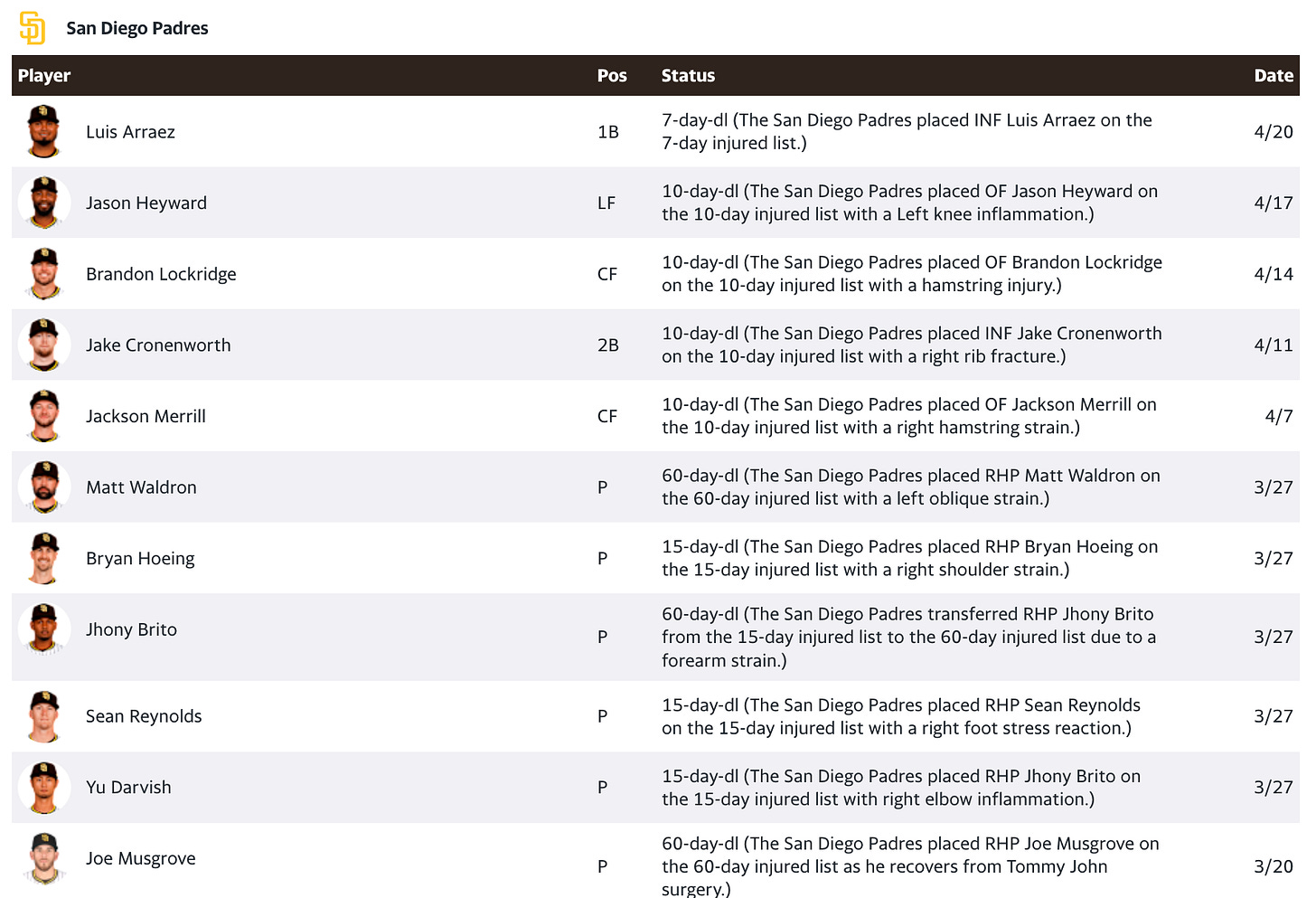





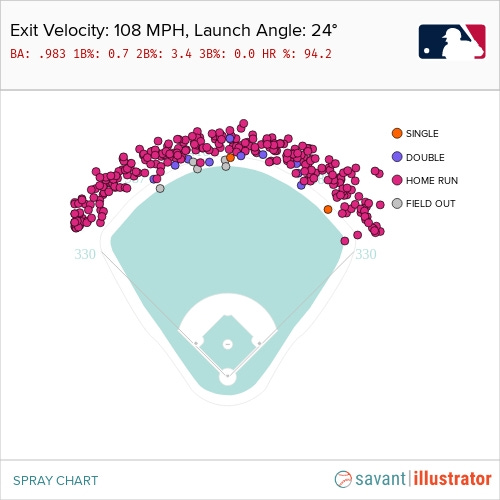






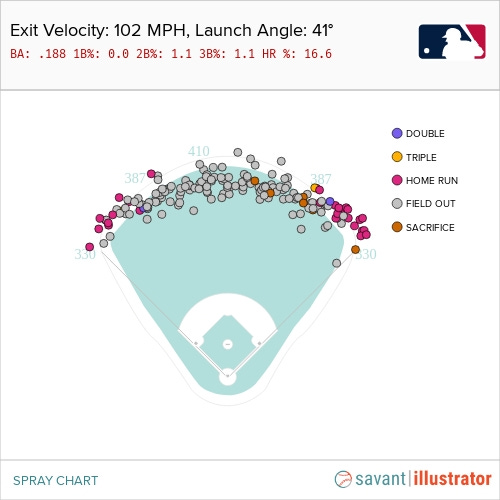




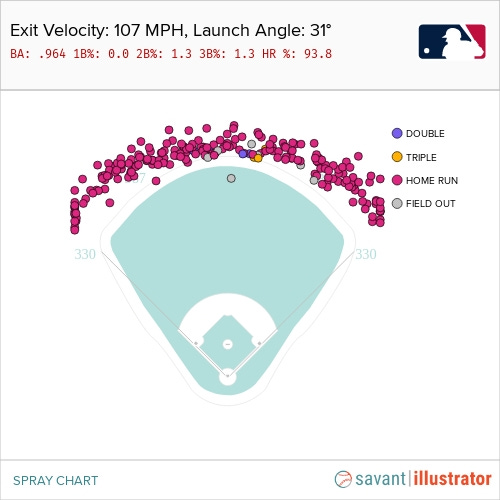

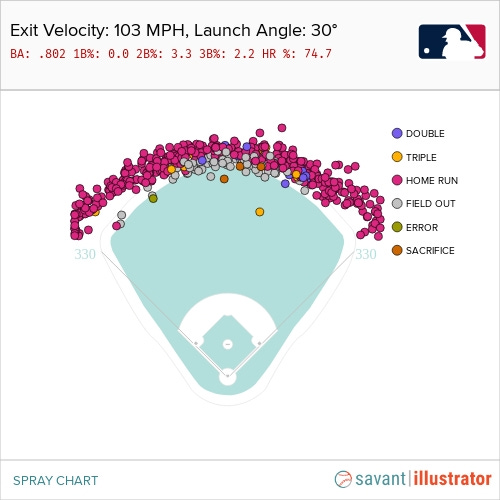






Thanks Archi! I really enjoy your posts. I'm concerned you aren't getting enough exposure, you need a hype man!
Great insight and detail. As a fan, Hart is just scary to watch. It’s nice to have a lefty in the mix just wish he had something dominant. Appreciate your work.